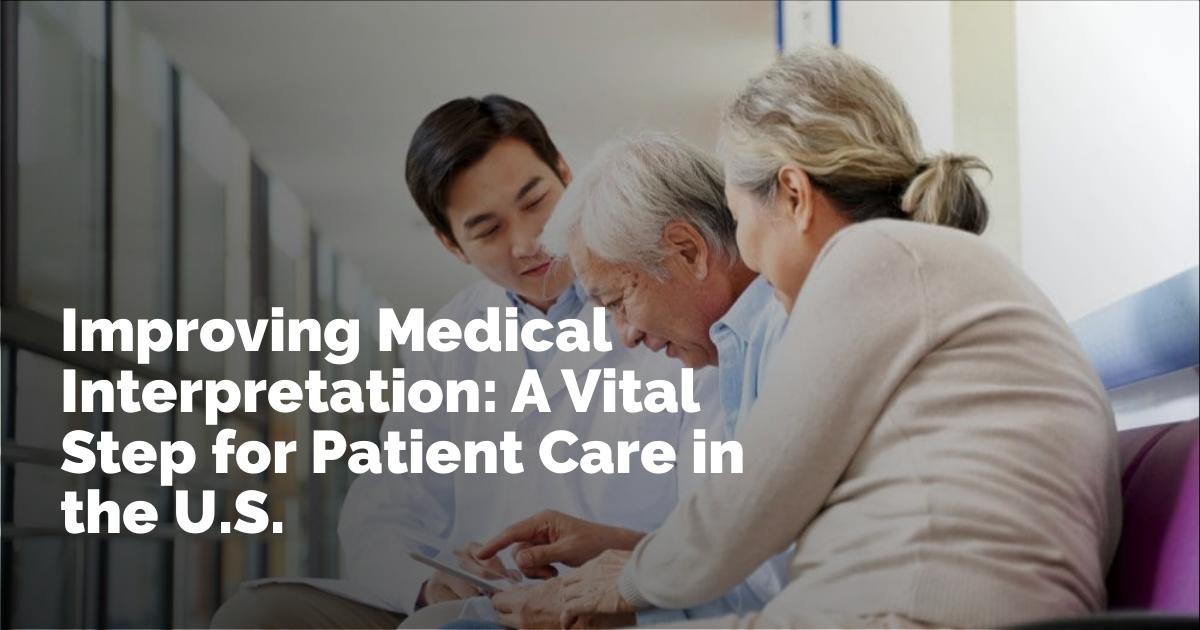The Language Barrier in U.S. Healthcare: An Urgent Concern
The United States faces a pressing problem with the provision of medical interpretation services. There is a significant shortage of in-person medical interpreters across healthcare facilities. In response to this insufficiency, hospitals often turn to technological solutions such as machine translation tools. These tools, including widely used platforms like Google Translate, offer varying degrees of accuracy depending on the language in question. For instance, a study analyzing Google Translate's performance highlighted a stark disparity in accuracy between Spanish and Chinese translations. Such studies reveal that inaccuracies in Chinese translations can lead to clinically significant mistakes, increasing the risk of life-threatening consequences.
Moreover, while Google Translate caters to Mandarin speakers, it overlooks Cantonese, a major language spoken by over 70 million people globally and nearly half of the Limited English Proficiency (LEP) residents in locales like San Francisco. This gap in language support underlines an inequitable landscape of healthcare accessibility, severely affecting LEP patients' ability to effectively communicate symptoms. Consequently, these patients are more frequently readmitted to hospitals, not due to their medical conditions worsening, but because of inadequate communication during their prior visits.
The Cultural Competence Challenge
Language barriers are not the sole obstacles to effective communication in healthcare settings. Cultural differences further complicate interactions between patients and providers. For example, a study conducted in 2022 emphasized that Hmong patients with LEP often prefer to rely on family members over professional interpreters, a preference particularly relevant in the Minneapolis-St. Paul area where many Hmong communities reside. However, relying on family and friends might not guarantee accurate translations, especially concerning complex medical terminology.
Conversely, Spanish-speaking Latinx patients generally express a preference for professional interpreters, avoiding the discomfort of revealing personal health information to relatives or acquaintances. These preferences highlight the nuanced nature of cultural interactions and the need for culturally sensitive translation services to bridge communication gaps effectively.
Assessing Community Health Needs and Interpreter Services
Hospitals are tasked with conducting Community Health Needs Assessments (CHNAs) aimed at understanding the social determinants of health affecting their service populations. These assessments provide insights into racial, ethnic, linguistic, and nativity-related dynamics in the community, creating an opportunity to address health inequities through collaborative partnerships with local organizations and residents.
Although hospitals propose to enhance access to interpreter services based on CHNA findings, these recommendations often remain vague and lack a structured plan for implementation. Despite technical upgrades making interpreter services more accessible, many clinicians still underutilize them, often citing technical difficulties as a significant obstacle.
Strategic Utilization of Demographic Data
Demographic data should be the cornerstone for allocating resources towards more effective and responsive interpreter services. For instance, health facilities like Tufts Medical Center, which serves Boston’s Chinatown, predominantly catering to Cantonese and Mandarin-speaking populations, could benefit from eschewing generic machine translation tools in favor of a collaborative approach using both family members and professional interpreters for more reliable communication of medical information.
Nonetheless, even a well-resourced hospital interpreter service may fall short of meeting patients' needs if it lacks cultural competence. Effective communication transcends mere language concordance, necessitating an understanding of cultural backgrounds and nuances. Investing in comprehensive diversity training can enhance cultural competence within hospitals, though current programs are often criticized for their generalized and nonspecific guidance. Incorporating inputs from community focus groups into training programs could offer actionable insights, helping tailor these programs to address specific inequalities more effectively.
Bridging Cultural and Linguistic Gaps in Healthcare
Adhering to Western-centric health communication models without accommodating linguistic and cultural diversity is both unjust and impractical. Understanding and respecting the varying cultural values and communication styles of patients can significantly inform and improve healthcare decision-making and outcomes. By designing translation services that are responsive to the unique demographic compositions of their LEP populations, healthcare systems can offer improved, equitable care across diverse patient groups.
In conclusion, the problem of inadequate medical interpretation in the U.S. is multifaceted, requiring an integrated approach that includes technological enhancements, cultural sensitivity, and strategic employment of demographic data. Only then can the healthcare system in the U.S. adapt to these evolving challenges, ensuring that all patients receive the understanding and care they rightfully deserve.
출처 : Original Source

